Information for patients
This leaflet can be made available in other formats including large print, CD and Braille and in languages other than English, upon request.
About your wound and what happens after my procedure?
After your operation, the surgeon will have closed your wound with nylon sutures or dissolvable stitches. You will be told before you leave what type you have. An appointment will be arranged with the upper limb dressing clinic in two weeks to review your wound. If you would prefer to attend your local GP instead you will need to contact them to make an appointment within 2 weeks.
You will have some discharge (blood, fluid) on your dressing, especially in the first few days, this is normal. This is more common with keyhole (arthroscopic) surgery.
After discharge from the hospital, if the dressing comes off you will need to apply new ones. You can either contact your local pharmacy or the Day Case Unit who will be able to help you with spare dressings. Please keep your wound covered with dressings until you have been reviewed in the dressing clinic.
Showering and hair washing
- You are normally advised to wait 48 hours before showering and/or hair washing. Use your other arm for showering and /or hair washing.
- Do not put any soap, shower gel, body lotion, talcum powder or other bathing products directly onto the healing wound to prevent you from getting an infection in your wound.
- Do not worry if you splash the wound with water but do not rub the wound area as this will cause pain and might delay the healing process.
- Pat the wound gently with a clean towel after showering.
- Avoid aerosol deodorants for the first two weeks.
Signs of infection in your wound
If you experience any of the following possible symptoms of infection please contact Ward 33 on the numbers at the end of this leaflet.
- Excessive discharge or ooze from the wound after 48 hours (this may be clear, blood stained or yellow/green pus).
- Redness or inflammation spreading out from the edge of the wound.
- Area around the wound becomes swollen.
- The edges of any part of the wound separating or gaping open.
Advice regarding your peripheral nerve block
The effect of the nerve block you have been given can last for up to 48 hours. During this time the arm which has been anaesthetised (numbed) will feel very heavy and will need to be supported with a sling until your muscles start working again. You may need someone to help you carry out everyday tasks as you recover from the surgery.
As the nerve block wears off you may experience pins and needles in your fingers. This is completely normal.
What to expect on discharge home and advice on what to do
You will not have full sensation in the area of your surgery when you go home. Due to this it can be easier to get injured. The numbness may commonly last for up to 48 hours. You should use any supports you are given once back at home.
Take special care around heat sources, such as fires or radiators. You will not feel heat while the body part is numb, and you may burn yourself.
Avoid using any machinery or domestic appliances, such as kettles, irons and cooking equipment.
Start taking your pain relief medicines before the arm numbness from the nerve block wears off and as instructed by the hospital.
This is important as the effect of the nerve block can stop quite suddenly. Remember to follow the manufacturer’s instructions when taking any medication.
If you are not able to complete the exercises after 48 hours following your procedure please contact the hospital, see phone numbers at the end of the leaflet.
Continue moving your hand with the exercises below.
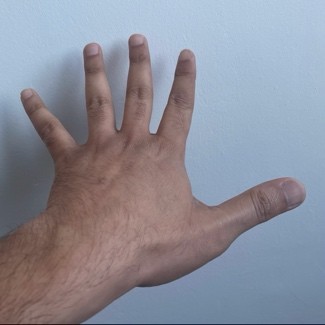
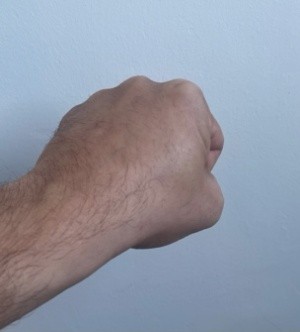


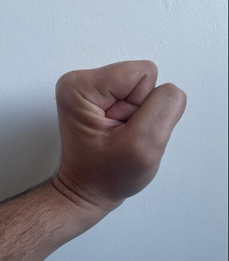
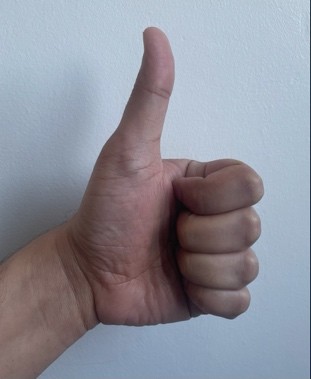
How do I fit and remove my sling?
Once you wake from your surgery you will already have a broad arm sling applied. However you will also be shown how to remove and fit your sling by the physiotherapist before you leave the hospital.
Applying your sling
- Start in a sitting position with your arm supported on a pillow.
- Slide the sling over your wrist and thumb into the thumb loop.
- Slide the sling over your forearm so that your elbow fits snugly into the corner of the sling.
- Take the shoulder strap across your back and over your injured shoulder.
- Feed the strap through the ring and attach it back to itself with the Velcro.
How to find a comfortable position to sleep in
Sleeping can be uncomfortable for the first few weeks, particularly if you try to lay on your operated arm. A ‘V’ pillow can sometimes help.
We recommend you sleep on your back or unaffected side. When lying on your back we suggest you use a pillow underneath your affected arm for support.
Advice for dressing following your upper limb surgery?
You are allowed to remove your sling to wash and dress. At first you may find this difficult or painful to do yourself. You may need help from family or friends.
We recommend that a strip wash (washing of the body with soap and water and a sponge or cloth, but without using a bath or shower) is safest and most comfortable initially.
Top tips for dressing
- Always dress your injured arm first and take it out of clothes last.
- Sit on a chair with your arm supported so it is rested in the sling position.
- Gently slide out the sling from underneath your forearm.
- Slide your injured arm into the garment as far up the shoulder as possible, using your good arm. Keep the shoulder of the arm that has been operated on as still as possible.
- Once this arm is fully in the sleeve bring the garment around your back and put the other arm in.
- Once you have dressed your upper body, place your arm back in the sling.
- Front opening clothes e.g. shirts with zips/buttons are the easiest.
Washing your arm pit while wearing a sling
Place your hand or elbow on a surface and move your body away. Then you should find it easier to wash and dry your armpit.
How can I prevent the unaffected joints of my arm becoming stiff while wearing a shoulder sling?
Your physiotherapist will advise you on the exercises you should do that are specific to you and your recovery. The following exercises are aimed at preventing stiffness in the unaffected joints in your arm and neck.
You should aim to perform the following exercises 3 to 4 times a day. Perform 10 repetitions, have a rest for a minute and finally repeat 10 times for each exercise.
Neck lateral flexion
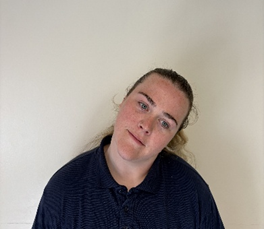

Stretch your neck by taking your ear towards your shoulder and repeat on the opposite side as advised.
Neck flexion and extension
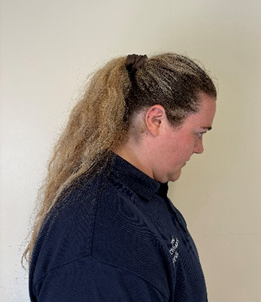
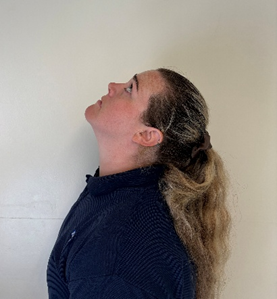
Slowly look down and gently bring your chin down towards your chest.
Slowly roll your head and neck backwards to look up at the ceiling as far as is comfortable.
Return to the start position and repeat as advised.
Neck rotations


Turn your head to one side to look over your shoulder.
Return to the centre change direction and repeat as advised.
Shoulder shrugs and circles
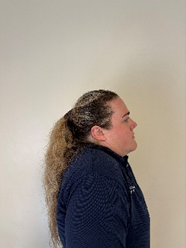
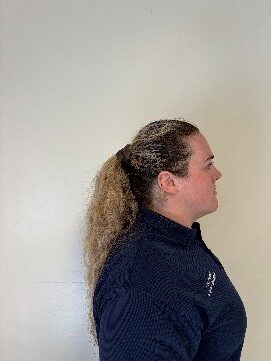
Shrug your shoulders up towards your ears, then circle them back and down. Return to the start position and repeat as advised.
Elbow flexion and extension
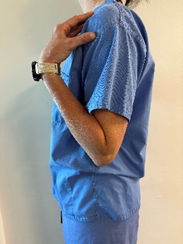
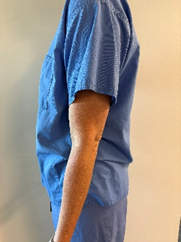
Bend your elbow so your fingers touch your shoulder, then straighten your elbow as far as you can. Return to the start position and repeat as advised.
Wrist supination (palm facing down) and pronation (palm facing up over)
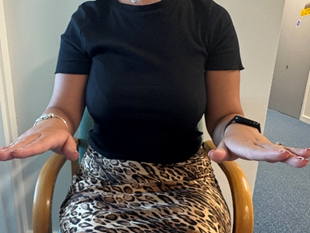
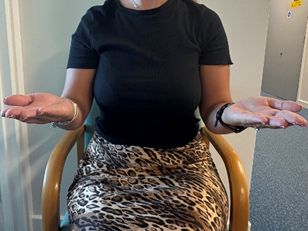
Keeping the elbows close to your body .Turn your palm upwards as far as you can until your palm is facing up, now turn it back towards the start position. Keep your upper arm still throughout. Repeat as advised.
Wrist flexion and extension

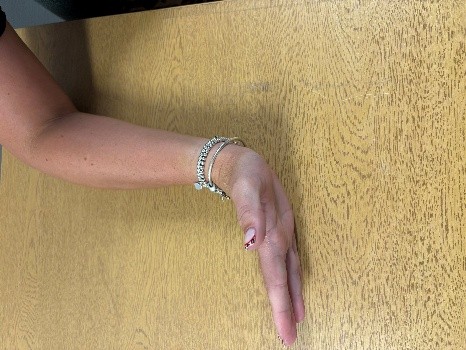

Extend the wrist backwards as far as you can, then flex the wrist forwards as far as you can. Return to start position and repeat as advised.
Making and closing a fist


Gently close your fingers to make a loose fist. Release and repeat.
Seated table slides
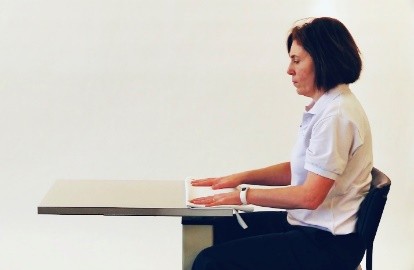

In sitting rest your hands on a table. Using a duster or similar object slide your hands away from your body to as far as comfortable and then return to the start position.
How often and for how long should I wear my sling for?
All day and night for…………………………………………………..
Remove the sling for washing, dressing and exercises only.
For comfort only.
Useful Contacts:
University Hospital of North Tees
Upper Limb Secretary
Telephone: 01642 624442
Monday to Friday, 9.00am to 5.00pm
Physiotherapy Appointment Queries
Telephone: 01429 522471
Monday to Friday, 9.00am to 5.00pm
Ward 32/33
Telephone 01642 382832 or 01642 382732
24 hours 7 days a week
Other Useful links:
Website: North tees and Hartlepool NHS foundation trust
- Upper Limb (Shoulder, elbow, hand and wrist Surgery) – patient information. Arthroscopic decompression surgery leaflet
Comments, concerns, compliments or complaints
Patient Experience Team (PET)
We are continually trying to improve the services we provide. We want to know what we’re doing well or if there’s anything which we can improve, that’s why the Patient Experience Team (PET) is here to help. Our Team is here to try to resolve your concerns. The office is based at the University Hospital of North Tees if you wish to discuss concerns in person. Our contact details are:
Telephone: 01642 624719
Freephone: 0800 092 0084
Opening hours: Monday to Friday, 9:30am to 4:00pm
Email: [email protected]
Out of hours
Out of hours if you wish to speak to a senior member of Trust staff, please contact the hospital switchboard who will bleep the appropriate person.
Telephone: 01642 617617
Patient, Public and People with Lived Experience
We are looking for patients to share their experiences of healthcare and to join our Involvement Bank. Working with the patients, carers, families and the general population we support in making decisions about their care can lead to better health outcomes, increased patient satisfaction and a better overall experience. We want to listen and work with you in shaping the future of your healthcare services. To find out more about the Involvement Bank go to our website or contact us at:
Website: www.nth.nhs.uk/about/community/people-with-lived-experience
Email: [email protected]
Data protection and use of patient information
The Trust has developed Data Protection policies in accordance with Data Protection Legislation (UK General Data Protection Regulations and Data Protection Act 2018) and the Freedom of Information Act 2000. All of our staff respect these policies and confidentiality is adhered to at all times. If you require further information on how we process your information please see our Privacy Notices.
Telephone: 01642 383551
Email: [email protected]
Privacy NoticesLeaflet feedback
This leaflet has been produced in partnership with patients and carers. All patient leaflets are regularly reviewed, and any suggestions you have as to how it may be improved are extremely valuable. Please write to the Clinical Governance team at:
Email: [email protected]
Leaflet reference: PIL1589 version 1
Date for Review: 28 August 2028